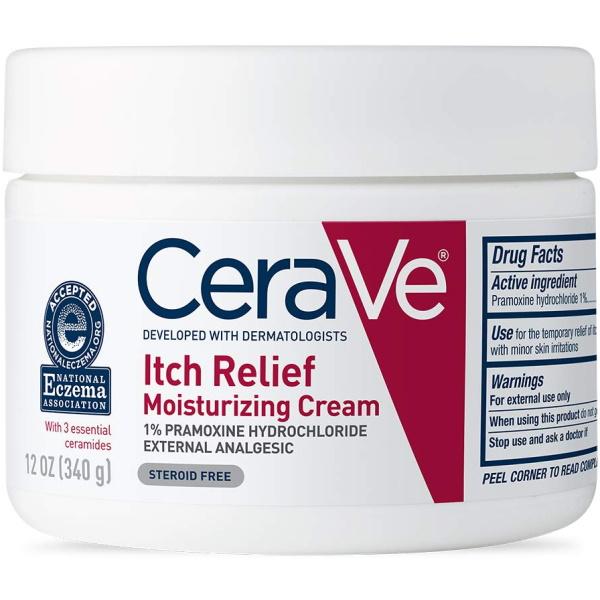
To provide itch relief and curb inflammation if you have allergies or sensitive skin, a healthcare provider may suggest antihistamines. In fact, people with AD have a greater chance of developing comorbidities or related health conditions, namely asthma, hay fever and food allergies.

Antihistamines and pain relieversĪtopic dermatitis (AD), the most common form of eczema is part of what’s known as the atopic triad (eczema, allergies and asthma). You can also find soaps and other products for eczema relief on that list.
#CERAVE ITCH RELIEF FULL#
Luckily you can start your search with the full list of products with the National Eczema Association’s Seal of Approval. Even with these guidelines, it can be tricky to find the best healing ointment or moisturizer.
#CERAVE ITCH RELIEF SKIN#
In general, look for hand creams and moisturizing creams with skin protectants that are good for itchy skin and eczema flare-ups. Some of the best eczema creams include lotions from Cerave, eucerin eczema relief cream, Vanicream products and Aveeno products. If you wanna become a real HA-and-the-skin expert, you can read much more about the topic at hyaluronic acid (including penetration-questions, differences between high and low molecular weight versions and a bunch of references to scientific literature).When shopping lotions, moisturizers, ointments and creams, which ones are the right kind-and which ones are the wrong kind? In general you want to get body creams, hand cream, relief creams and body lotions that are anti-itch and contain eczema-friendly ingredients, such as: Based on the Evonik-research and the natural role of LMW-HA in the body working as a pro-inflammatory signal molecule, this ultra-low molecular weight version is a controversial ingredient.



So far we were writing about ceramides in plural. The BeautyBrains blog made a fantastic article about ceramides and they have listed a couple of examples about studies showing that ceramides - especially when used in certain ratios with cholesterol and fatty acids - do hydrate the skin and can help to repair the skin barrier. Now the question is only this: If we put ceramides all over our face do they work as well as ceramides already naturally in our skin? Well, the answer is probably a no, but they do work to some extent. So ceramides form kind of a "water-proof" protecting layer and make sure that our skin remains nice and hydrated. If ceramides in the skin are decreased, more water can evaporate from the skin and there is less water remaining in the skin. Ok, so now we know what ceramides are, let's see what they do in our skin: research shows clearly that they play a super important role in keeping the skin barrier healthy and the skin hydrated.


 0 kommentar(er)
0 kommentar(er)
